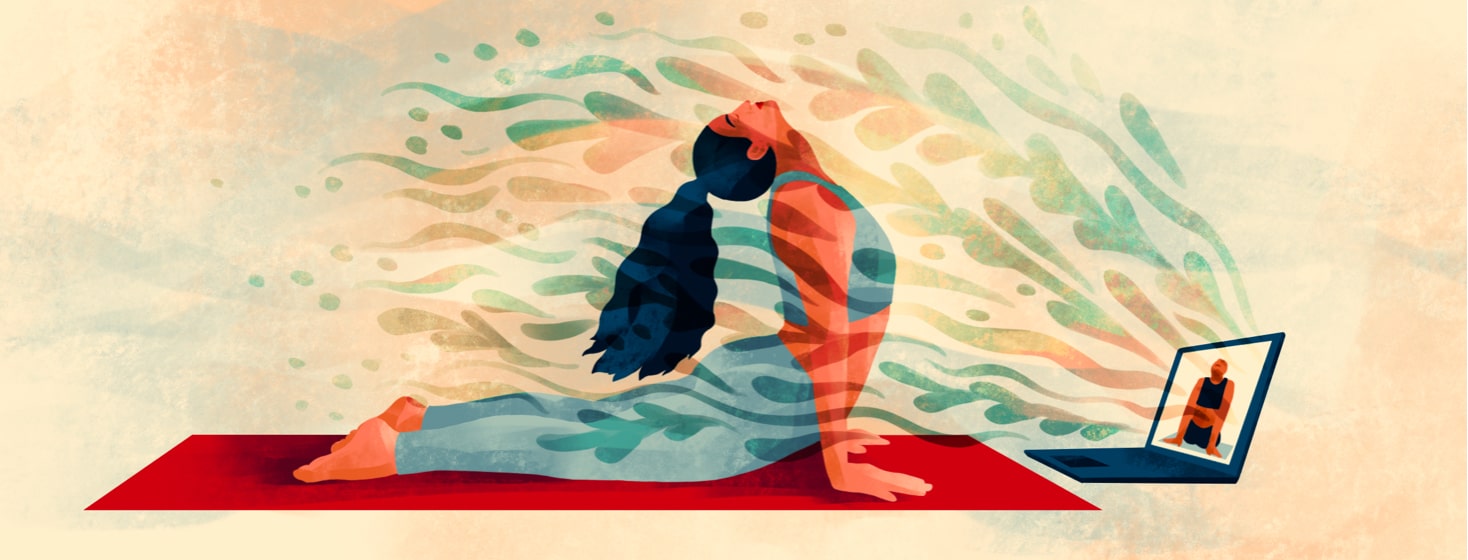Trying Yoga to Help My Crohn's: 4 Things I Learned
How often do we hear about health trends and wonder, "Could it work for me?" One of these is yoga. I've always been interested in trying yoga to see if it could help my IBD and general stress levels, which can sometimes be quite high with parenting a three-year-old, running a business, and having a chronic illness.
I also sometimes struggle to get a good night's sleep and heard yoga could help with this. So after trying yoga for the last month, here's what I learnt!
Can yoga help with IBD?
Of course, yoga cannot cure Crohn's or even necessarily help in a flare-up, but I was surprised to hear about a few studies that looked specifically at yoga and IBD.
One study of ulcerative colitis (UC) patients found yoga reduced anxiety and that intestinal pain was higher in the control group, who didn't undertake yoga. Another study, also in UC patients, found that disease activity was lower in the group of participants who did yoga and they had a higher quality of life. Interesting stuff!1,2
What I learned from trying yoga for Crohn's disease
1. Yoga is amazing for trapped wind pain
Thankfully trapped wind isn't something I experience all the time but when I do, it's excruciatingly painful. I discovered some great yoga poses that really work at helping you bloat and release trapped wind and thus reduce your pain. One of these is "happy baby" where you lie down, bring both knees up to your chest, push your feet up the ceiling, and hold on to your ankles. Rocking back and forth in this position can really help move trapped wind and relieve pain.
2. The power of deep breath is great for stomach pain
It seems silly, as we breathe all the time, but I hadn't actually practiced deep breathing. When I am in a flare, I tend to panic and breathe rapidly. It is then when anxious thoughts can multiply so simply practising deep breathing – often done through your nose – really helped me calm down and helped with anxiety.
I also find belly breathing helpful for stomach pain. This is when you breathe in and let in air towards your lower belly, holding one hand on your belly. As you breathe in, your belly rises out and as you exhale it goes back in again. Sometimes I now find myself doing this automatically when I flare.
3. We hold so much stress in our body
At the start of my yoga journey, I decided to just commit to 10-15 minutes of evening yoga. I tried a mix of different yoga tutorials. I found digestive-specific ones really useful if I had overeaten but most of the time I just followed an all-over body stretch. I quickly realised how much stress I held in my shoulders and neck from working on the sofa with a laptop and also just leading a stressful life. I found after a few days of regular stretches, there was far less tension in my body.
4. Low-intensity exercise can make you feel great
I often put off exercising because I don't have a ton of spoons by the end of the day. But yoga is a really low-intensity exercise and can still help you in some of the ways more intense exercise can. You don't have to run or go to the gym to feel the benefits of exercise, so if this is you, why not try 5 minutes of simple yoga? You might find it still makes you feel great!
I have really enjoyed trying yoga and look forward to continuing it. And hopefully becoming more co-ordinated!

Join the conversation